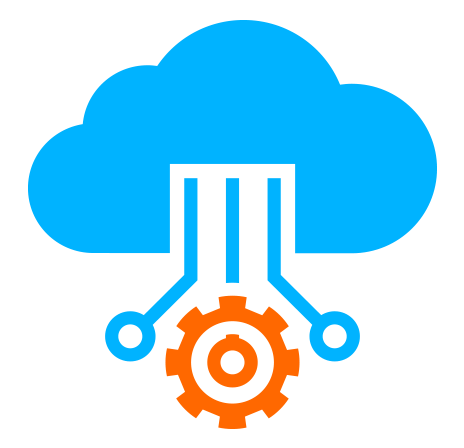 Server
Colocation
Server
Colocation
 CDN
Network
CDN
Network
 Linux Cloud
Hosting
Linux Cloud
Hosting
 VMware Public
Cloud
VMware Public
Cloud
 Multi-Cloud
Hosting
Multi-Cloud
Hosting
 Cloud
Server Hosting
Cloud
Server Hosting
 Kubernetes
Kubernetes
 API Gateway
API Gateway

In 2025, artificial intelligence has officially gone from buzzword to business backbone. Whether it’s a chatbot assisting millions, a fraud detection model flagging real-time threats, or a recommendation engine driving eCommerce sales — AI models are everywhere. But here's the catch: generic, pre-trained models no longer cut it. Businesses now crave hyper-personalized, domain-specific intelligence.
That’s where fine-tuning comes in.
According to a 2024 Deloitte AI Trends report, 61% of organizations investing in AI fine-tuning have seen a 30–70% improvement in performance metrics — from accuracy to response relevance. This signals a clear shift: rather than training models from scratch or using pre-trained ones as-is, businesses are opting to fine-tune existing models to align with their unique context.
But what exactly is fine-tuning in machine learning? Why is it so valuable? And how are platforms like Cyfuture Cloud making it scalable and cost-efficient on the cloud?
Let’s break it down, conversationally and practically.
To put it simply, fine-tuning is the process of taking a pre-trained machine learning model (usually a large model trained on massive datasets) and continuing to train it on a smaller, domain-specific dataset.
Think of it like this: you’ve bought a factory-made suit (the pre-trained model). But it doesn’t fit your exact body shape or style. So you take it to a tailor (fine-tuning) who adjusts it based on your preferences and measurements (domain data).
Technically, it means:
You don’t have to train a model from scratch (saving time, money, and compute)
You retain the model’s general intelligence while customizing it for specific tasks
You improve performance dramatically on your target task (especially in niche domains)
Let’s face it: training models from scratch is expensive. You need:
Terabytes of data
Dozens of high-end servers
Skilled ML engineers and data scientists
Weeks or even months of experimentation
On the other hand, fine-tuning lets you:
Use a pre-trained model like BERT, GPT, or ResNet
Train it on your domain-specific data (which can be as little as a few thousand examples)
Run the process in hours instead of weeks
Deploy the model with dramatically lower inference costs
And when done on platforms like Cyfuture Cloud, where GPU-backed infrastructure is optimized for AI workloads, the efficiency becomes even more pronounced.
Depending on your business goals, you can fine-tune:
Natural Language Processing (NLP) Models
Chatbots, sentiment analysis tools, content moderation systems, etc.
Models: BERT, RoBERTa, GPT, T5, etc.
Vision Models
For facial recognition, object detection, medical imaging.
Models: ResNet, YOLO, EfficientNet
Speech and Audio Models
For transcription, intent detection, or speaker recognition
Models: Wav2Vec, Whisper, DeepSpeech
Multimodal Models
Combining text, vision, and audio inputs
Used in e-commerce, autonomous vehicles, virtual assistants
With Cyfuture Cloud, users can spin up GPU-powered servers in India or globally to support these workloads without worrying about hardware setup, power usage, or cooling requirements.
Let’s say you want to build a chatbot for a law firm that can interpret Indian legal queries. Instead of starting from scratch, here’s how you could fine-tune an existing NLP model like BERT:
Start with a Pre-Trained Model
You pick BERT, trained on a massive English corpus. It knows language well, but it doesn’t understand legal jargon.
Prepare Your Dataset
You gather Indian legal documents, case summaries, common client queries, etc.
Set Up Your Environment
Using a cloud platform like Cyfuture Cloud, launch a GPU-backed instance with pre-installed ML libraries (PyTorch, TensorFlow).
Fine-Tune with Specific Parameters
Learning rate: Low (to avoid overwriting knowledge)
Batch size: Depends on dataset size and GPU power
Epochs: Fewer than training from scratch
Evaluate and Iterate
Run test cases
Monitor metrics like precision, recall, and F1 score
Adjust learning parameters as needed
Deploy Efficiently
Use AI Inference as a Service (also provided by Cyfuture Cloud) to serve the model to your users.
Result? A smarter, faster, more accurate AI assistant for your niche audience.
There’s a reason most companies are moving their ML workflows to the cloud.
Training and fine-tuning large models demand high-end GPUs, rapid I/O, and large-scale storage — something on-prem servers can't always support efficiently.
Cyfuture Cloud, for instance, offers a purpose-built AI infrastructure that supports:
On-demand and reserved GPU instances (including NVIDIA A100, H100)
Data localization within India (important for regulated industries)
IDE Labs as a Service: Test and debug fine-tuned models before deployment
RAG Platform integration for hybrid intelligence (combining inference + retrieval)
Whether you’re an enterprise looking to scale or a startup experimenting with your first LLM-based product, fine-tuning on Cyfuture Cloud is cost-efficient, faster to deploy, and scalable.
Here’s where fine-tuning isn’t just useful — it’s essential:
Healthcare
A general model won’t understand specific medical terms or conditions. Fine-tuning on localized medical records improves diagnostic assistance systems.
Legal Services
Generic models may misinterpret statutory language. Fine-tuning helps align AI output with jurisdiction-specific language.
Finance and Banking
Fine-tune models for fraud detection, customer support, and compliance language understanding.
Retail & E-commerce
Personalization is key. Fine-tuning helps models learn brand-specific tones, product names, and buyer personas.
Multilingual Applications
Most pre-trained models are optimized for global English. Fine-tuning them with regional languages and dialects improves inclusivity and accuracy.
Here’s a ballpark estimate of what fine-tuning might cost on the cloud:
|
Model Type |
Fine-Tuning Cost (Estimate) |
Cloud Hours Required |
|
BERT (NLP) |
₹8,000 – ₹25,000 |
10–20 GPU hours |
|
GPT-2/GPT-J |
₹50,000 – ₹1,20,000+ |
40–100 GPU hours |
|
ResNet (Vision) |
₹20,000 – ₹60,000 |
15–30 GPU hours |
These prices can vary depending on:
Dataset size
Number of parameters in the model
Optimization required
Compute used (A100 vs lower-tier GPUs)
With Cyfuture Cloud, businesses can take advantage of INR-based billing, autoscaling GPU clusters, and multi-tenant architecture to save significantly on costs compared to global hyperscalers.
In today’s AI-driven world, using off-the-shelf models is like wearing someone else’s prescription glasses — it might work, but not perfectly. For real value, models must understand your data, speak your customer’s language, and perform with your precision.
That’s what fine-tuning offers.
And with cloud platforms like Cyfuture Cloud, even smaller teams can tap into enterprise-grade infrastructure, fine-tune models affordably, and deploy them at scale — without managing physical servers or massive CapEx investments.
Ready to tailor your AI to perfection? Fine-tune your models with Cyfuture Cloud and experience the difference it makes in precision, performance, and personalization.

Let’s talk about the future, and make it happen!
By continuing to use and navigate this website, you are agreeing to the use of cookies.
Find out more


